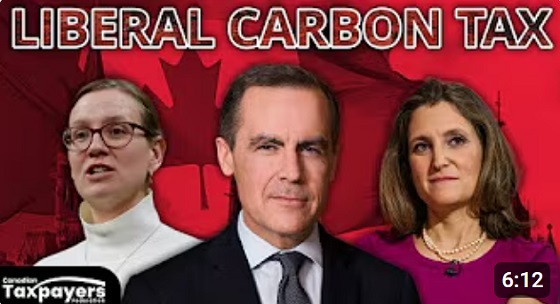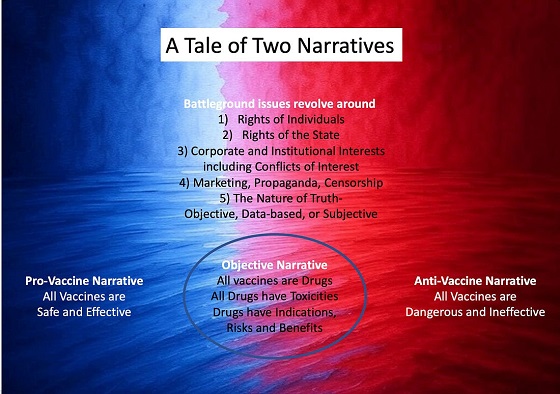Business
Global Affairs Canada goes on real estate spending spree, taxpayers foot the bill

From the Canadian Taxpayers Federation
By Ryan Thorpe
Records obtained by the CTF show Clark’s lavish condo is just the tip of the iceberg, with the department dropping taxpayer cash on other luxury properties around the world.
Official residences in other countries: $38 million.
Properties in Afghanistan abandoned to the Taliban: $41 million.
Vacant land in Senegal: $12.5 million.
A chancery in Ukraine: $10.2 million.
Those are some of the holdings in Global Affairs Canada’s real estate portfolio, which has cost taxpayers $186 million in the past 10 years alone.

All told, Global Affairs Canada owns more than 400 properties in more than 70 countries, according to access-to-information records obtained by the Canadian Taxpayers Federation.
“Do we really need the government dropping tens of millions of dollars on official residences half-way around the world?” said Franco Terrazzano, CTF Federal Director. “Better question, does Senegal not have vacant land available for less than eight figures?
“With the government more than $1 trillion in debt, taxpayers need to know why the government is spending so much of our money overseas.”
Global Affairs Canada is embroiled in controversy after it purchased a $9-million luxury condo for New York Consul General Tom Clark amid a housing and cost-of-living crisis.
The records obtained by the CTF show Clark’s lavish condo is just the tip of the iceberg, with the department dropping taxpayer cash on other luxury properties around the world.
Global Affairs Canada has spent $38.4 million on official residences since 2014, including New Zealand ($2.4 million), Barbados ($3.8 million) and Trinidad and Tobago ($2.5 million), among others.
In London, U.K., Global Affairs Canada spent $58 million on 23 properties since 2015, all of which serve as “staff quarters,” according to the records. All told, Global Affairs Canada owns 65 properties in London purchased for $208 million.
In Kabul, Afghanistan, Global Affairs Canada spent $41 million on three properties in late 2018 and 2019, which have since been abandoned to the Taliban.
Prior to the first property in Kabul being purchased, the U.S. had already begun negotiations with the Taliban for an end to the Afghanistan War.
Seven months after Global Affairs Canada purchased the last property in Kabul, the U.S. struck a deal with the Taliban for the withdrawal of American troops from the country.
On Aug. 15, 2021, Canada pulled its presence from Afghanistan.
“We have … been unable to inspect the state of these properties since that date,” Global Affairs Canada told the CTF in a written statement.
In October 2021, the Globe and Mail reported that “Islamist militants now guard the former headquarters of Canada’s diplomatic mission in the Afghan capital.”
“This is a lot of taxpayers’ money to spend on new property in Afghanistan when our ally had already been clear it was preparing to leave,” Terrazzano said. “Canadian taxpayers are out $41 million and the Taliban now has new digs, so is anyone in government going to answer for the decision to purchase these properties?”
In Kyiv, Ukraine, Global Affairs Canada purchased a chancery for $10.2 million in 2017.
In Senegal, a country in West Africa, Global Affairs Canada bought $12.5 million worth of “vacant land” in 2022.
“Global Affairs Canada’s real estate portfolio is bloated and the taxpayer tab is ludicrous,” Terrazzano said. “Someone in government must explain what value taxpayers are supposedly getting for the hundreds of millions of dollars spent on all these lavish properties in far flung countries.
“And if Canadians aren’t getting real value, then it’s time to sell off properties so taxpayers can recoup some of this money.”
2025 Federal Election
MEI-Ipsos poll: 56 per cent of Canadians support increasing access to non-governmental healthcare providers

-
Most believe private providers can deliver services faster than government-run hospitals
-
77 per cent of Canadians say their provincial healthcare system is too bureaucratic
Canadians are increasingly in favour of breaking the government monopoly over health care by opening the door to independent providers and cross-border treatments, an MEI-Ipsos poll has revealed.
“Canadians from coast to coast are signalling they want to see more involvement from independent health providers in our health system,” explains Emmanuelle B. Faubert, economist at the MEI. “They understand that universal access doesn’t mean government-run, and that consistent failures to deliver timely care in government hospitals are a feature of the current system.”
Support for independent health care is on the rise, with 56 per cent of respondents in favour of allowing patients to access services provided by independent health entrepreneurs. Only 25 per cent oppose this.
In Quebec, support is especially strong, with 68 per cent endorsing this change.
Favourable views of accessing care through a mixed system are widespread, with three quarters of respondents stating that private entrepreneurs can deliver healthcare services faster than hospitals managed by the government. This is up four percentage points from last year.
Countries like Sweden and France combine universal coverage with independent providers and deliver faster, more accessible care. When informed about how these health systems run, nearly two in three Canadians favour adopting such models.
The poll also finds that 73 per cent of Canadians support allowing patients to receive treatment abroad with provincial coverage, which could help reduce long wait times at home.
Common in the European Union, this “cross-border directive” enabled 450,000 patients to access elective surgeries in 2022, with costs reimbursed as if they had been treated in their home country.
There’s a growing consensus that provincial healthcare systems are overly bureaucratic, with the strongest agreement in Alberta, B.C., and Quebec. The proportion of Canadians holding this view has risen by 16 percentage points since 2020.
Nor do Canadians see more spending as being a solution: over half say the current pace of healthcare spending in their province is unsustainable.
“Governments shouldn’t keep doubling down on what isn’t working. Instead, they should look at what works abroad,” says Ms. Faubert. “Canadians have made it clear they want to shift gears; now it’s up to policymakers to show they’re listening.”
A sample of 1,164 Canadians aged 18 and older was polled between March 24th and March 28th, 2025. The margin of error is ±3.3 percentage points, 19 times out of 20.
The results of the MEI-Ipsos poll are available here.
* * *
The MEI is an independent public policy think tank with offices in Montreal, Ottawa, and Calgary. Through its publications, media appearances, and advisory services to policymakers, the MEI stimulates public policy debate and reforms based on sound economics and entrepreneurship.
2025 Federal Election
POLL: Canadians say industrial carbon tax makes life more expensive

The Canadian Taxpayers Federation released Leger polling showing 70 per cent of Canadians believe businesses pass on most or some of the cost of the industrial carbon tax to consumers. Meanwhile, just nine per cent believe businesses pay most of the cost.
“The poll shows Canadians understand that a carbon tax on business is a carbon tax on Canadians that makes life more expensive,” said Franco Terrazzano, CTF Federal Director. “Only nine per cent of Canadians believe Liberal Leader Mark Carney’s claim that businesses will pay most of the cost of his carbon tax.
“Canadians have a simple question for Carney: How much will your carbon tax cost?”
The federal government currently imposes an industrial carbon tax on oil and gas, steel and fertilizer businesses, among others.
Carney said he would “improve and tighten” the industrial carbon tax and extend the “framework to 2035.” Carney also said that by “changing the carbon tax … We are making the large companies pay for everybody.”
The Leger poll asked Canadians who they think ultimately pays the industrial carbon tax. Results of the poll show:
- 44 per cent say most of the cost is passed on to consumers
- 26 per cent say some of the cost is passed on to consumers
- 9 per cent say businesses pay most of the cost
- 21 per cent don’t know
Among those decided on the issue, 89 per cent of Canadians say businesses pass on most or some of the cost to consumers.
“Carbon taxes on refineries make gas more expensive, carbon taxes on utilities make home heating more expensive and carbon taxes on fertilizer plants increase costs for farmers and that makes groceries more expensive,” Terrazzano said. “A carbon tax on business will push our entrepreneurs to cut production in Canada and increase production south of the border and that means higher prices and fewer jobs for Canadians.”
-

 Alberta2 days ago
Alberta2 days agoMade in Alberta! Province makes it easier to support local products with Buy Local program
-

 2025 Federal Election2 days ago
2025 Federal Election2 days agoCSIS Warned Beijing Would Brand Conservatives as Trumpian. Now Carney’s Campaign Is Doing It.
-

 2025 Federal Election2 days ago
2025 Federal Election2 days agoInside Buttongate: How the Liberal Swamp Tried to Smear the Conservative Movement — and Got Exposed
-

 Bruce Dowbiggin1 day ago
Bruce Dowbiggin1 day agoIs HNIC Ready For The Winnipeg Jets To Be Canada’s Heroes?
-

 Dr. Robert Malone1 day ago
Dr. Robert Malone1 day agoThe West Texas Measles Outbreak as a Societal and Political Mirror
-

 COVID-191 day ago
COVID-191 day agoCOVID virus, vaccines are driving explosion in cancer, billionaire scientist tells Tucker Carlson
-

 Health1 day ago
Health1 day agoHorrific and Deadly Effects of Antidepressants
-

 illegal immigration1 day ago
illegal immigration1 day agoDespite court rulings, the Trump Administration shows no interest in helping Abrego Garcia return to the U.S.







